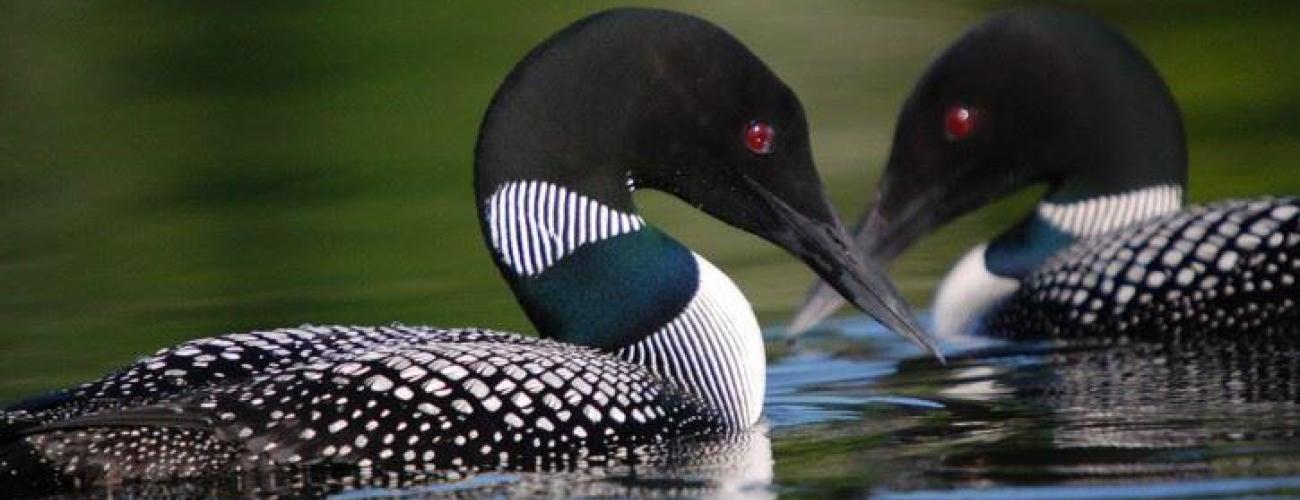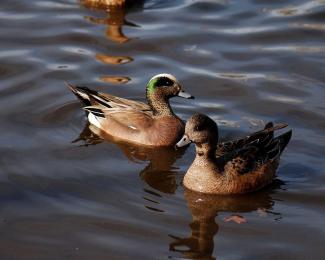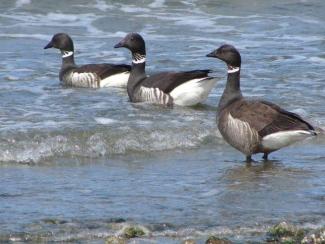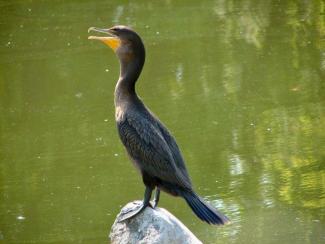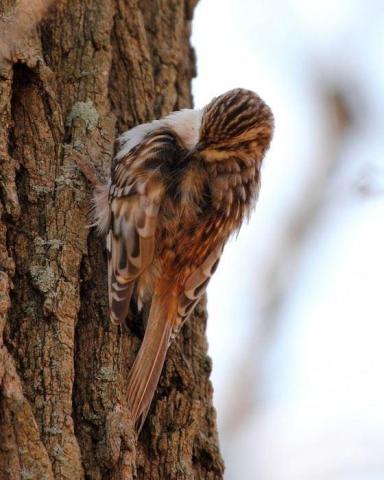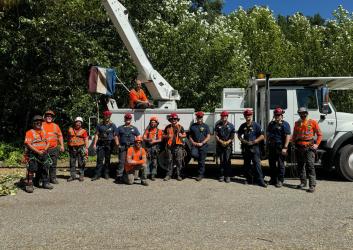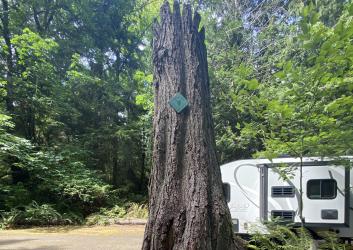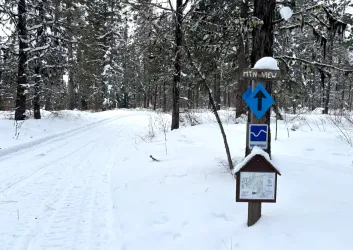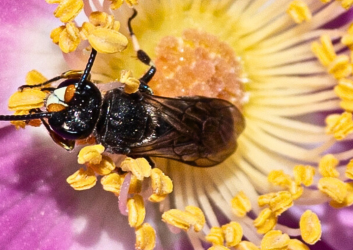Road trip adventures: Birds of the Olympic Peninsula
Listen for loons! You will know if common loons, like these two, are nearby by their eerie call.
Winter is wonderful birdwatching weather!
Winter is a spectacular time to break out the binoculars and check out the bird action at state parks in Puget Sound and the Strait of Juan de Fuca. Many of your state parks serve as a regular haven for migratory and year-round bird populations. Cold, clear days on the Olympic Peninsula draw all manner of fowl who fish, float and flit by the water.
The dramatic dichotomy of forests butting against rocky shores creates a unique sanctuary for shorebirds and tree dwellers alike. So, gather your camera, coat and hat, round up those binoculars and let's shake a tail feather!
The total mileage of this journey is just shy of 150 miles and about a 3.5-hour drive time. Get an early start, and hit some or all of the stops in just one day, or make a weekend of it! Either way, a road trip is a relaxing way to recreate. Take your camera along, too!
🦆 Stop one: Sequim Bay State Park
Start your day at Sequim Bay! On the quiet waters just inside the Olympic rain shadow, this park is surrounded by many great birdwatching areas. Stop by the nearby Dungeness River Audubon Center to pick up some literature on bird watching and regional highlights, and see some great exhibits. Then, head over to the park where you just might catch some Arctic terns fighting and fishing as they stop to feed on their 40,000-mile annual migration route.
And make way for ducks! This is home to a wide variety of waddlers such as northern shovelers and wigeons. Spot golden plovers foraging in the grass. Turn your binoculars — and your ears — inland, and you might catch the red-breasted sapsucker tapping away in search of insects.
Then, head on down the inside of the Peninsula along Highway 101 until you swing north at Discovery Bay onto State Route 20 toward…
🦆 Stop two: Fort Worden Historical State Park
Brants take center stage at Fort Worden! Spot these small geese dabbling for their dinners all along the Strait of Juan de Fuca and Admiralty Inlet's rocky shores. Keep an eye out for funny, long-billed whimbrels and fluffy sanderlings strutting and foraging for bugs and crabs among the rocks as they dash back and forth to the rhythm of the tides.
Stop in at the Port Townsend Marine Science Center where you'll learn even more about all the wonderful wildlife inhabiting the region, including really cool — and kid-friendly — exhibits featuring inhabitants of our Northwest waters. Then, head up to the fort above and into the trees where you might catch a glimpse and an earful of little yellow pine siskins twittering as they fight for seeds.
Then, it's back onto Highway 20 southbound, a left turn onto Highway 19 (aka Rhody Drive), and follow the signs to Marrowstone Island (State Route 116) where you'll land at…
🦆 Stop three: Fort Flagler Historical State Park
Stocky and darkly colored, the black turnstone doesn't pack the flash of other shorebirds. But it's a blast to watch them search for eats on the rocky shores at Fort Flagler. Dashing here and there, they flip over pebbles (which gives them their name) to find insects and crabs. Watch them compete for turf along the surf with the dramatically plumed blackbellied plover!
Then, set your sights on the horizon to spot cormorants and grebes diving for fish.
Getting hungry? It's just about lunchtime, so let's backtrack to Highway 101 southbound and head down Hood Canal to …
🦆 Stop four: Dosewallips State Park
Ducks lead the shorebird population at Dosewallips and are a delight to watch as you enjoy a picnic lunch. Pack your own, or shop in nearby Brinnon and bring it in to one of the park's sheltered tables.
You might spy American wigeon and the more rare Eurasian wigeon dabbling in the salt marsh slough grasses. See if you can spot lesser scaups diving for shellfish — their gizzards are so powerful they can eat them shell and all!
Take your binoculars to the alder-lined, .2-mile North Tidal Trail to the observation deck, and you may catch some majestic bald eagles fishing in the icy waters. Wildlife bonus: harbor seals are often sighted here, and a herd of Roosevelt elk make the park a regular stop.
Now we are headed south on 101 again to…
🦆 Stop five: Potlatch State Park
Red-breasted mergansers are interesting-looking ducks, to be sure, but fun to watch as they bob on the Hood Canal waters. Keep your ears peeled — that eerie call you hear might just be a common loon.
Search the foliage for red crossbills with their unique beaks and little fox sparrows kicking up sprays of leaves in search of bugs on the forest floor.
Noisy, bossy and bright Steller's jays are common sights in Potlatch's tree-lined north end.
Now let's swing back onto 101 and turn east on State Route 106 toward…
🦆 Stop six: Twanoh State Park
The warm Hood Canal waters and conifer forests at Twanoh State Park attract an avian extravaganza! Ruddy ducks dig bobbing about in the marshy areas near the gravel- and oyster shell-covered shore. Noisy, boisterous red-necked grebes love the gentle waters here and compete fiercely for territory with the goldeneyes and iridescently plumed buffleheads.
Take a break in one of the rustic (and really cool) shelters built in the 1930s by the Civilian Conservation Corps, and listen for tiny brown creepers chirping in the trees.
Just one last stop to go! Continue east on SR 106 until it hooks up with Hwy 3 in Belfair. Head south on SR 3 to Pickering Road, then take the Harstine Island Bridge and…
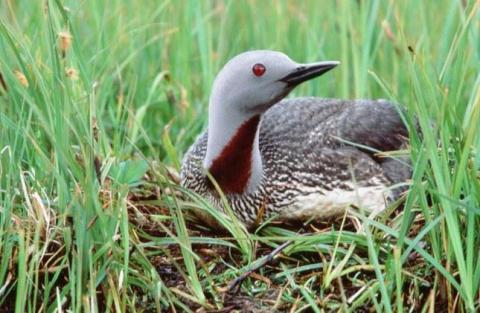
🦆 Stop seven: Jarrell Cove State Park
End your day the island way! Surf scoters frequent Jarrell Cove and are a pleasure to watch dive in the shallows. If you're lucky, you might spot the occasional red-throated loon during high tide.
At low tide, you're sure to spot Bonaparte's full and other gull types lounging on the mudflats before retiring to nest in the trees. You can also access the park from the water! Jarrell Cove is on the Cascadia Marine Trail.
Originally published February 26, 2020

